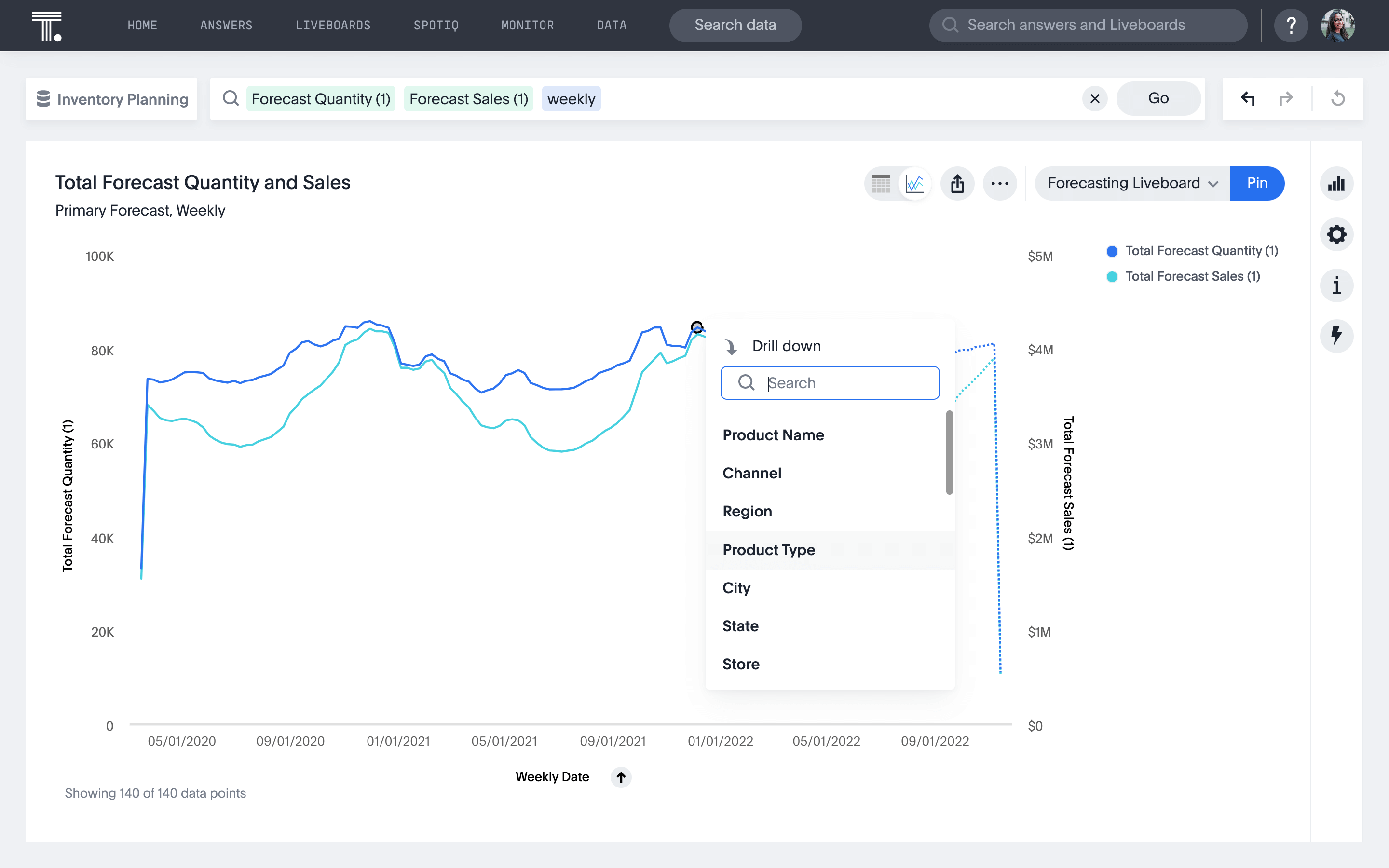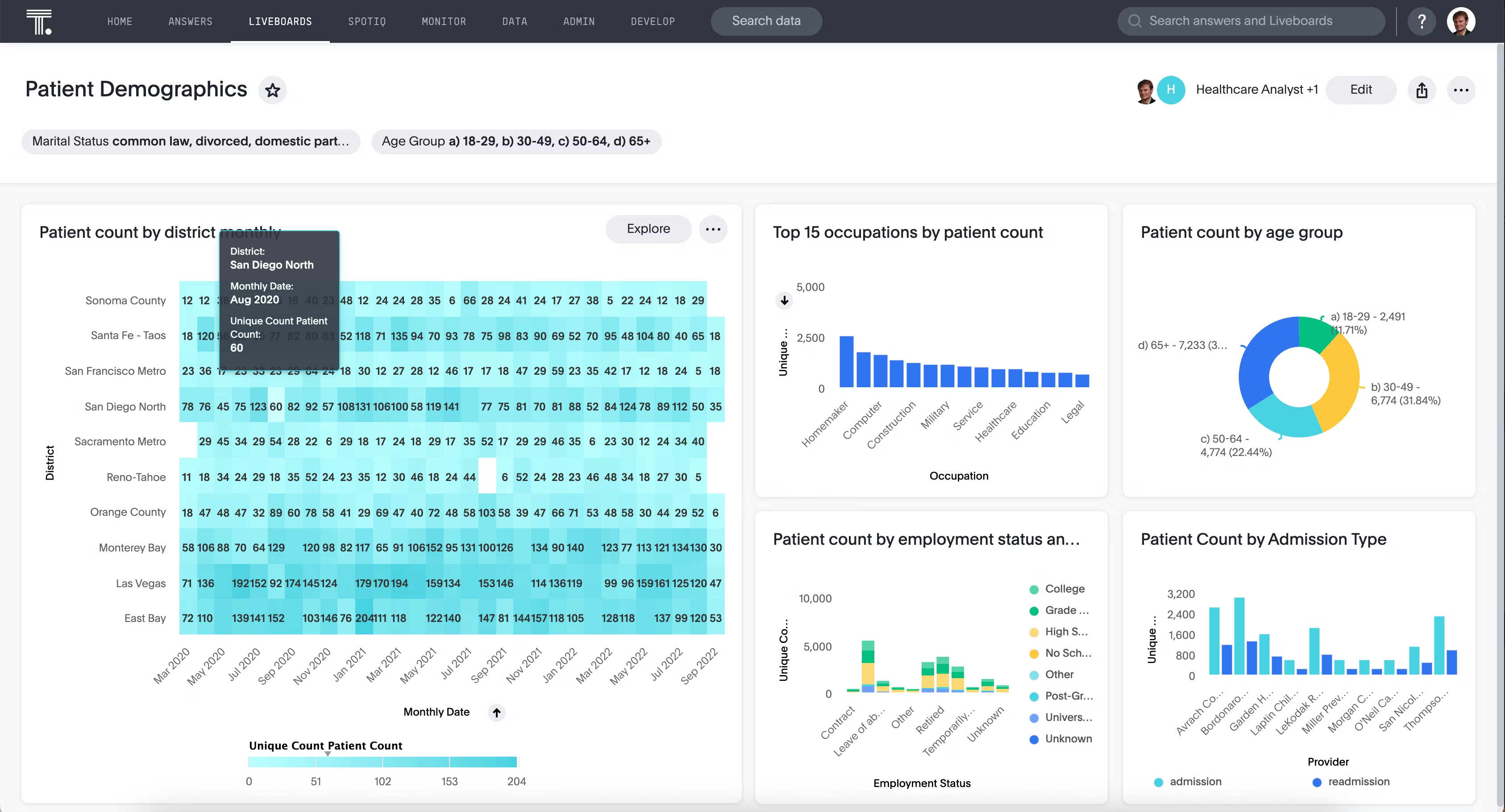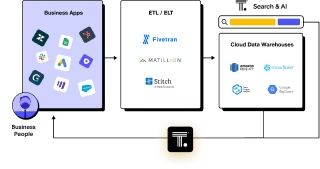We’re living in the decade of data. In this era, every company is a data company. That means every organization who wants to thrive and lead their industries needs to make decisions informed by data.
For many organizations, this means implementing more effective data visualization initiatives, to help business decision makers clearly understand the insights in their data. While that can help answer routine and frequent questions around data KPIs, it introduces a new challenge: answering the inevitable follow up question. While your dashboard might answer your first or second question, eventually you’ll run into new, uncharted territory.
That’s where ad hoc reporting and analysis comes into play. The most dynamic, effective data organizations are leveraging these capabilities to empower their teams in new ways to find answers and make decisions.
Table of contents:
Ad hoc analysis refers to the process of using ad hoc reporting to identify patterns or trends in data. It is a data-driven approach that allows users to unearth insights quickly in their data, without requiring a complex, net-new data pipeline to be built or reports to be generated. While other forms of business analytics help answer what’s going on in an organization, ad hoc analysis helps go a step deeper to answer why something is happening. This is because ad hoc analysis let’s users continually dig deeper into their data, answering questions and using those answers to fuel the next question. This helps answer questions such as what factors are driving product sales or why customer satisfaction has declined.
Ad hoc analysis typically begins with a business user needing information to make a decision. With more traditional, legacy analytics solutions, this request then is sent to a data professional, who creates an ad hoc report. Depending on SLAs and the queue of additional requests, this reports can take up to a week or longer to be answered.
By leveraging a self service analytics tool, however, business users themselves can answer their own questions and explore their data through ad hoc analysis. This frees up data teams, like data and analytics engineers, to focus on building the right data foundation, ensuring effective data governance, and investing in data modeling to unlock new use cases.
Ad hoc reporting refers to the process of generating reports whenever needed to provide business users with quick access to the data needed for decision-making. It enables organizations to leverage their existing data infrastructure without the need for traditional programming or complex ETL processes, especially when incorporated into a modern data stack.
Ad hoc reports are created on demand and often used in response to an immediate need or question. Ad hoc reports are highly customizable, allowing users to select the data they want and how it should be presented. They can quickly generate insights that would be more difficult to acquire using pre-defined, static reports and dead end dashboards.
See why dashboards are dead in 2023
This type of reporting allows users to quickly define the data they need and how it should be presented. Depending on the complexity of the report and the tool used to create it, additional knowledge of SQL or other database languages may be required.
The most effective ad hoc reporting tools, however, instead deliver a self service analytics experience, where business users can ask and answer their own questions in the same way they search their favorite consumer apps.
From there, users can create interactive data visualizations, share these insights with others, who can then continue the ad hoc exploration of data by drilling down into the details needed to make informed decisions.

Ad hoc reports also typically make insights actionable, not just in the analytics platform, but by making it simple to export reports to PDFs, spreadsheets, or presentations.
Ad hoc analysis is a powerful tool that can be used in many different industries. Here are 5 examples of how ad hoc analysis can be used:
Healthcare
With mountains of data at their fingertips, healthcare professionals can use ad hoc analysis to identify trends in patient health data, such as disease progression, hospital readmissions, and utilization rates. This can help healthcare organizations develop better care plans and cost-efficient treatments.

Retail
Retailers use ad hoc analysis to shift in accordance with changing customer demands, supply chains, and more by gaining insights into customer buying patterns as they evolve. By analyzing customer segmentation data, retailers can deliver personalized experiences, create more targeted promotions, and optimize pricing strategies.

Financial Services
Ad hoc analysis allows financial services organizations to identify potential risks in their portfolios, especially as events like natural disasters, geopolitical realities, and more reshape their risk profile. It also helps them to get a far more granular forecast and view into sales performance, improve customer service, and manage operational costs. Ad hoc analysis can also be used to identify fraudulent activity in online transactions and with digital payments.

Manufacturing
For any company in manufacturing, efficiency and supply chain management are critical to success. Manufacturers use ad hoc analysis to track certain manufacturing KPIs to get an understanding of production efficiency and pinpoint areas for improvement across their entire chain. It can also be used to identify defects in products or processes, enabling manufacturers to improve quality and reduce costs.
Technology
The technology industry today is built around understanding and delighting customers. Technology companies utilize ad hoc analysis to gain insights into user behavior and optimize product development cycles. This can help them develop new features faster that wow customers, identify and address churn issues before they become problematic, and remain competitive in the market.
Check out more ad hoc analysis and reporting examples and use cases
Ad hoc analysis and reporting as part of a wider business intelligence strategy can offer a range of advantages to businesses, helping them make better decisions quickly. Here are 8 benefits of ad hoc analysis and reporting:
Improved efficiency
Ad hoc reports allow users to answer their own questions by analyzing the data they need, when they need it, without having to wait for IT departments or large-scale report generation. This can save a lot of time, allowing users to get the information they need quickly and efficiently. It also helps data teams, freeing up their time from low level, routine work of tweaking and delivering reports to higher priority, strategic data initiatives.
Increased accuracy
Ad hoc analysis and reporting allow users to drill down into the data to uncover trends or patterns that may be hidden by static reporting methods. The best solutions do this directly against your cloud data in its entirety, not by cubing or aggregating data. By looking at the data with the finest level of granularity, business users find and act on more accurate insights.
Improved data analysis skills
By using ad hoc reports, users can get more comfortable navigating and analyzing data, enabling them to develop skills that will improve their decision-making capabilities over time. The value of developing a data mature organization, where data skills are well established, is staggering for organizations. Ad hoc analysis can help deliver this culture by empowering users to interact with the data directly.
Reduced costs
Ad hoc analysis and reporting solutions are often much cheaper than traditional report-generation solutions. This is because modern ad hoc solutions are priced differently, allowing organizations to pay for what they actually consume. This can help businesses reduce their costs and reinvest the savings into other areas of the business that need more attention.
Improved performance monitoring
Ad hoc analysis and reporting make it easy to monitor performance in real time, like data KPIs, giving businesses insights into how well they are performing compared to their competitors. This helps them stay ahead of the competition by quickly identifying any issues and taking action to address them before anyone else does.
Faster decision making
By having access to up-to-date data they can analyze and share on their own, users can make decisions faster than ever before. Ad hoc analysis is particularly useful for spotting emerging trends and opportunities that impact businesses on the frontlines, allowing businesses to capitalize on those opportunities before their competitors do.
See how ThoughtSpot is empowering the new decision makers to boost productivity, revenue, and customer satisfaction by almost 90%
Improved Collaboration
In a hybrid and distributed world, collaboration is critical to success, including when it comes to data initiatives. The right ad hoc analysis and reporting make it easier for teams to collaborate on projects and make decisions together because they allow everyone to access the same underlying data. This single source of truth, accessible by everyone, helps build consensus and drive optimal decisions based on accurate data rather than hunches, opinions, or guesswork.
Increased ROI
Ad hoc analysis and reporting can help businesses make better decisions faster, resulting in increased returns on investments. This allows businesses to get the most out of their data and use it to optimize operations and maximize profits.
See how companies get a 289% ROI with analytics from ThoughtSpot
Ad hoc analysis and reporting solutions provide businesses with many benefits that can help them maintain - or become - a leader when it comes to utilizing data. To get the most out of ad hoc analysis and reporting, businesses should invest in reliable software solutions that deliver a self service experience for users, without sacrificing scale, speed, or security.
Ad hoc analysis is an important part of data analysis, which involves analyzing data on an as-needed basis. This type of analysis allows for the exploration of different aspects of a particular dataset to gain insights into the underlying trends and patterns. Here are five steps that can help you effectively perform ad hoc analysis:
1. Define the Problem
Before jumping into the analysis, it's essential to define the problem that needs to be solved. This is where partnership between the business users and data experts is essential. Think about what you are trying to answer and why it matters. What questions are business users looking to answer on their own? Do these answers usually require action in another system or workflow? Doing this will provide a clearer focus and help guide your work throughout the process.
2. Connect and Gather Your Data
Once you have identified and defined the business problem, the next step is gathering all of the relevant data needed to solve it. This includes both quantitative (numerical) and qualitative (non-numerical) data from various sources such as internal databases, surveys, and external sources. Often, cloud data warehouses and other data platforms can help by making the process of gathering third party data and integrating it with your own proprietary data simple.

3. Analyze the Data
After collecting all of your data, it's time to get down to the analysis. This is when you use various techniques such as searching, drilling, visualizing, and identifying outliers, anomalies, correlations and regressions to gain insights from the data. Depending on what type of problem you are trying to solve, different techniques may be used. The most effective ad hoc analysis programs shift who can conduct the analysis from only data experts to business users. This requires a self service analytics layer, where business users can interact directly with the data.
4. Generate meaningful insights
Make sure that the insights generated from the analysis are meaningful and actionable. This involves interpreting the results and drawing conclusions based on what has been discovered to make informed decisions about how best to move forward with a given project or initiative.
5. Share findings
What good are insights that are kept to yourself? Presenting your insights clearly and effectively is key in ensuring that all stakeholders understand the finding so decisions can be made to improve processes, products, or services. Share the insights you have gathered in a governed way that is easy to understand and allows everyone to get on board with implementing necessary changes.
By following these five steps, you can effectively perform ad hoc analysis on any given dataset. Doing so will enable you to gain valuable insights that can lead to process improvements and more informed decision-making. With the right data and analysis techniques, ad hoc analysis can be an invaluable tool in understanding complex datasets and uncovering hidden patterns.
Ad hoc reporting is a powerful way to gain insights into your data that you may not have been able to find using traditional methods. It can be used to answer specific questions, or to explore new areas of data that you may not have considered before. Ad hoc analysis has many benefits, including the ability to quickly find answers to complex problems, and the flexibility to explore different data sets as new questions arise.
There are many different industry examples of ad hoc analysis in action, showing how it can be used effectively in a variety of industries and businesses. If you want to learn more about how to perform ad hoc analysis effectively, sign up for a ThoughtSpot free trial today. With ThoughtSpot, you’ll be able to easily analyze your data and make discoveries that could help improve your business.








